Many years ago while reading Mike Longworth's book I wondered what the odds would be of ever seeing a Ditson 222 guitar! As far as I know no other examples have ever some to light.
This guitar is one of only four Ditson 222 guitars ever made. It is stamped with serial number 176 from the Ditson number range (1 to 571) and was shipped to Charles H. Ditson & Co. in New York on December 30, 1916, along with three Ditson 111 and two more Ditson 222 guitars. No more Ditson 222 guitars were made after this date.
The first Ditson Dreadnought guitar (serial number 71) was also a 222. It was shipped on August 9, 1916. Shortly after this date an announcement for the "Dreadnought" appeared in the August 19, 1916 edition of the Music Trades Review, describing its intended use as a Hawaiian guitar for concert use and music recordings. At this time Hawaiian guitars made by Martin did not have a flat fingerboard and raised nut and saddle. Martin would set the guitar up as for gut strings and install a Kamiki nut extender, thus making a Hawaiian guitar that could be converted for playing with gut strings by simply removing the nut extender.
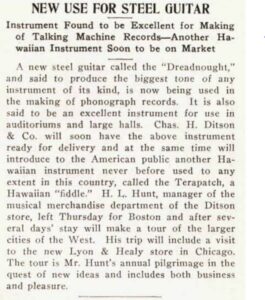
Below is an image of the specification card for Ditson Hawaiian guitars from the Martin archive. As can be seen a Ditson 222 was exactly the same as a regular Ditson 111 guitar but had celluloid bindings (like a style 2 ukulele) and had inlaid ebony pins.
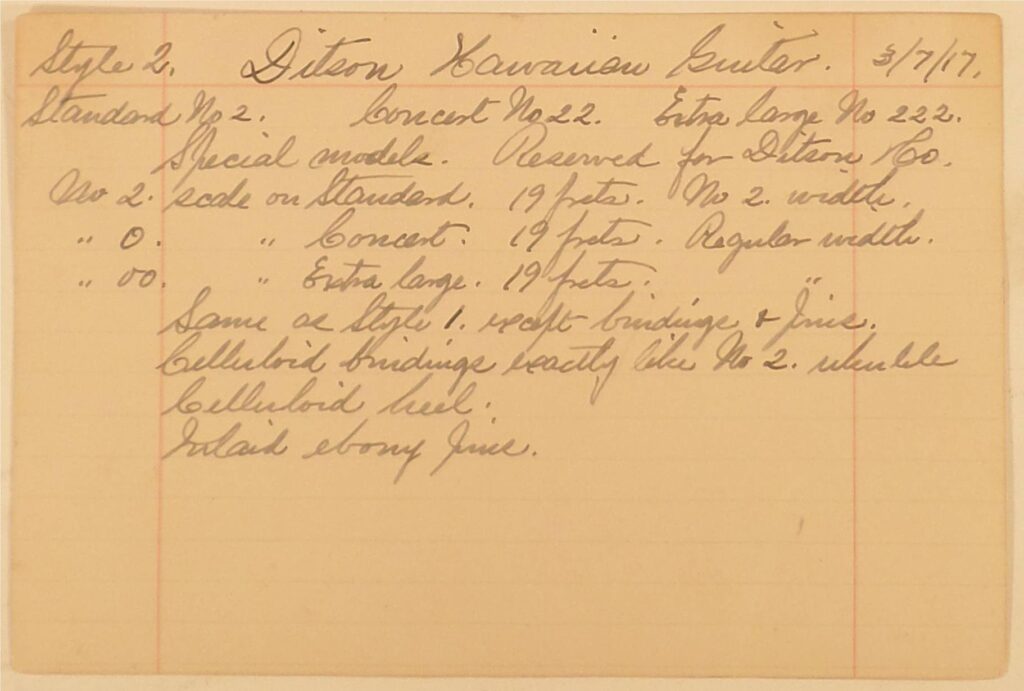
The guitar is currently set up as an Octachorda but, fortunately, the neck was left as a 6-string. Although the headstock was modified for mandolin machines this can easily be corrected. The guitar retains the original "stained" finish applied to Ditson guitars. As can be seen from the interior shots the top of the guitar is braced with a five-strut fan and original bridge plate is still in place.
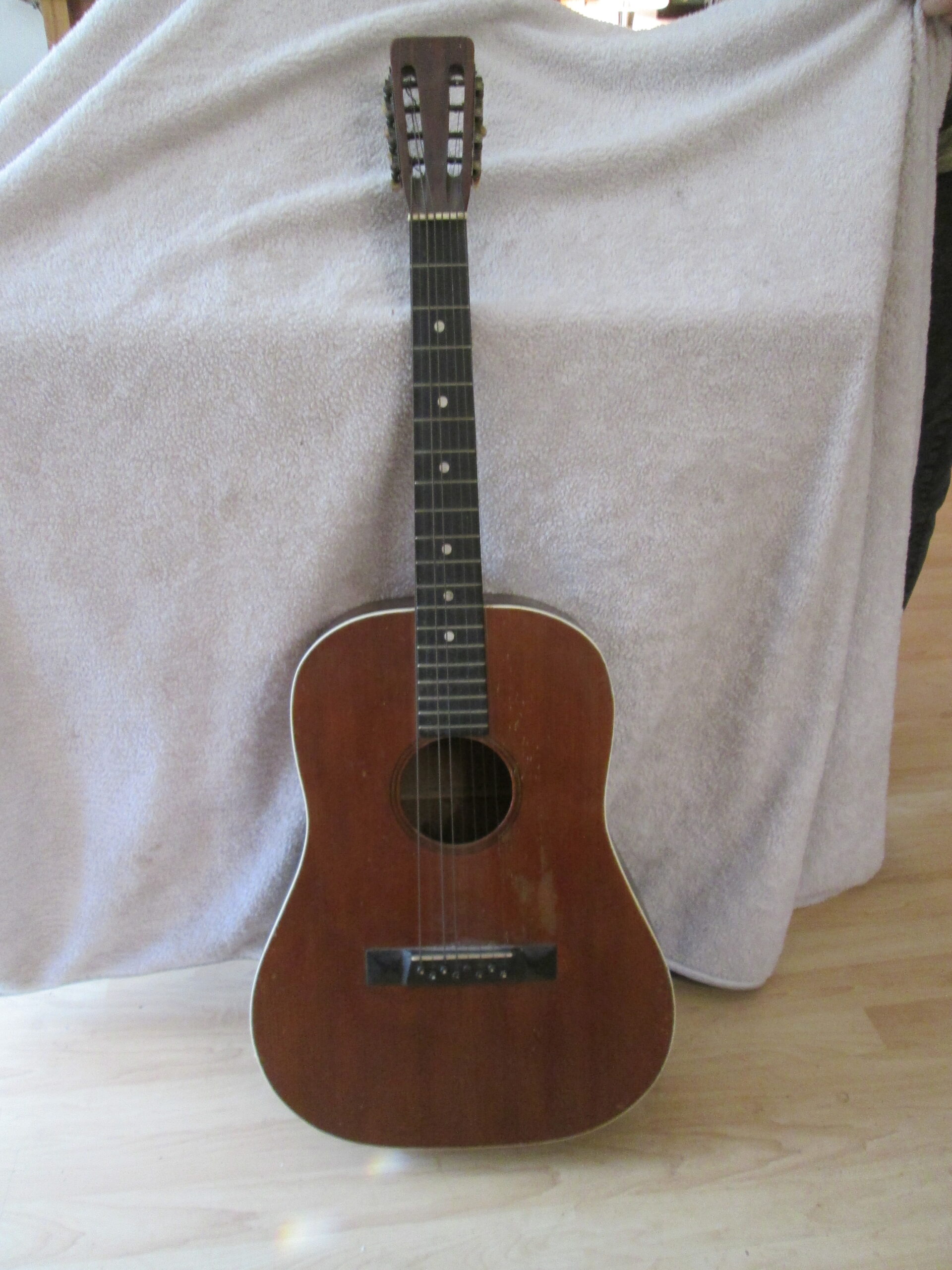
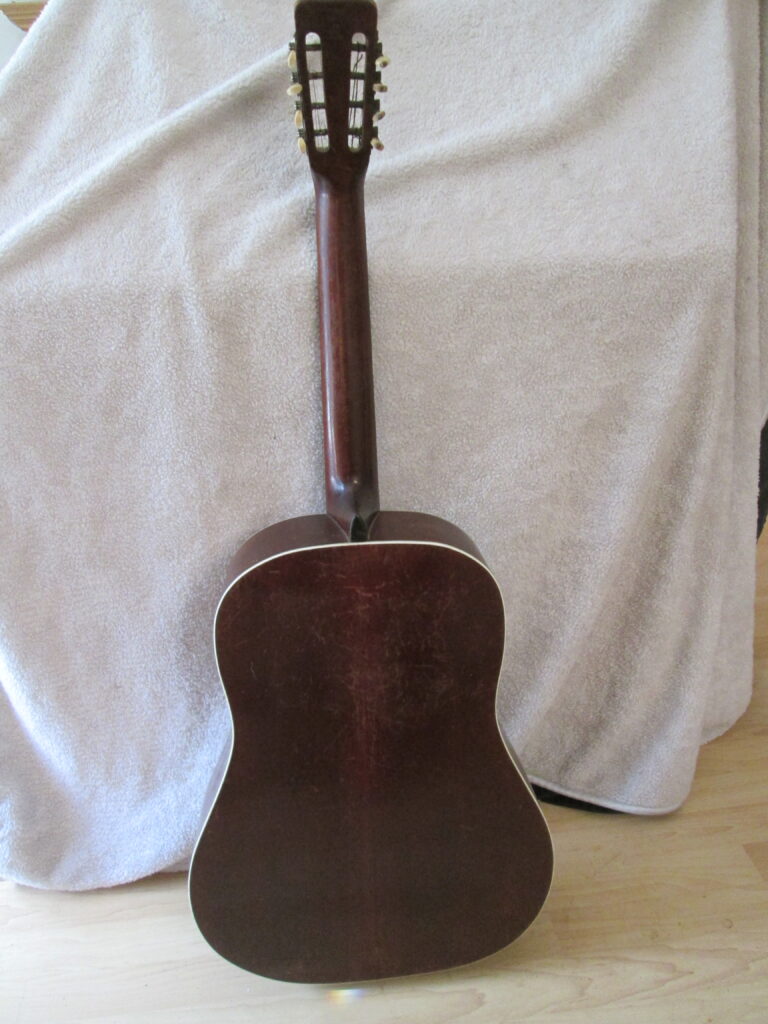

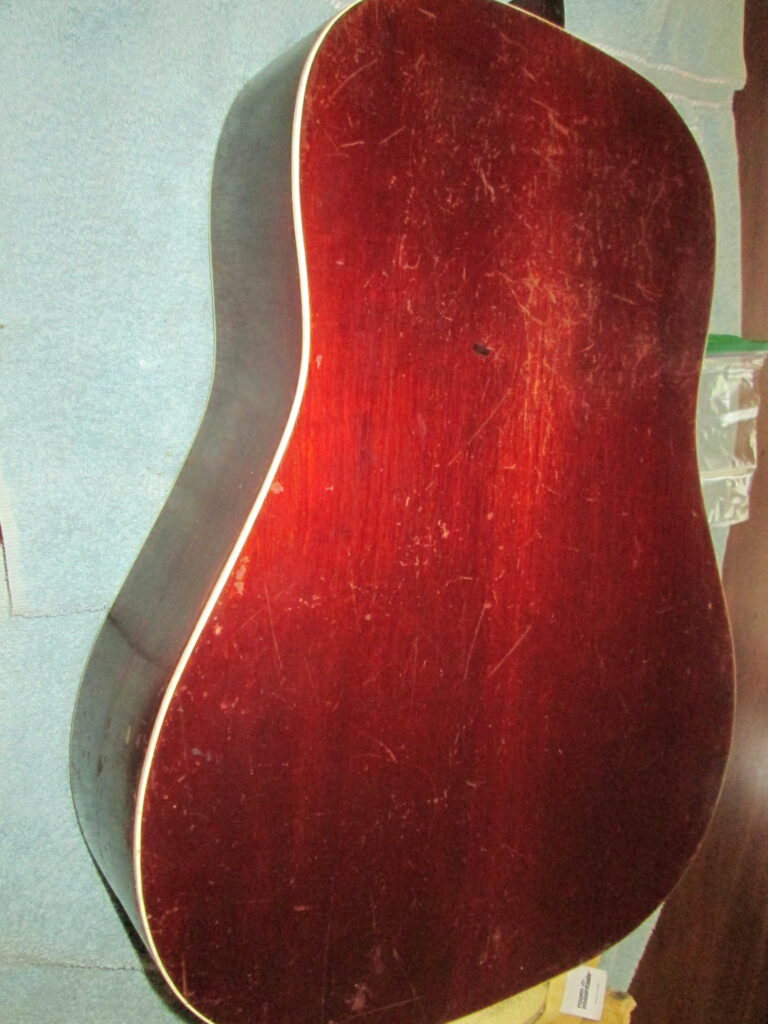
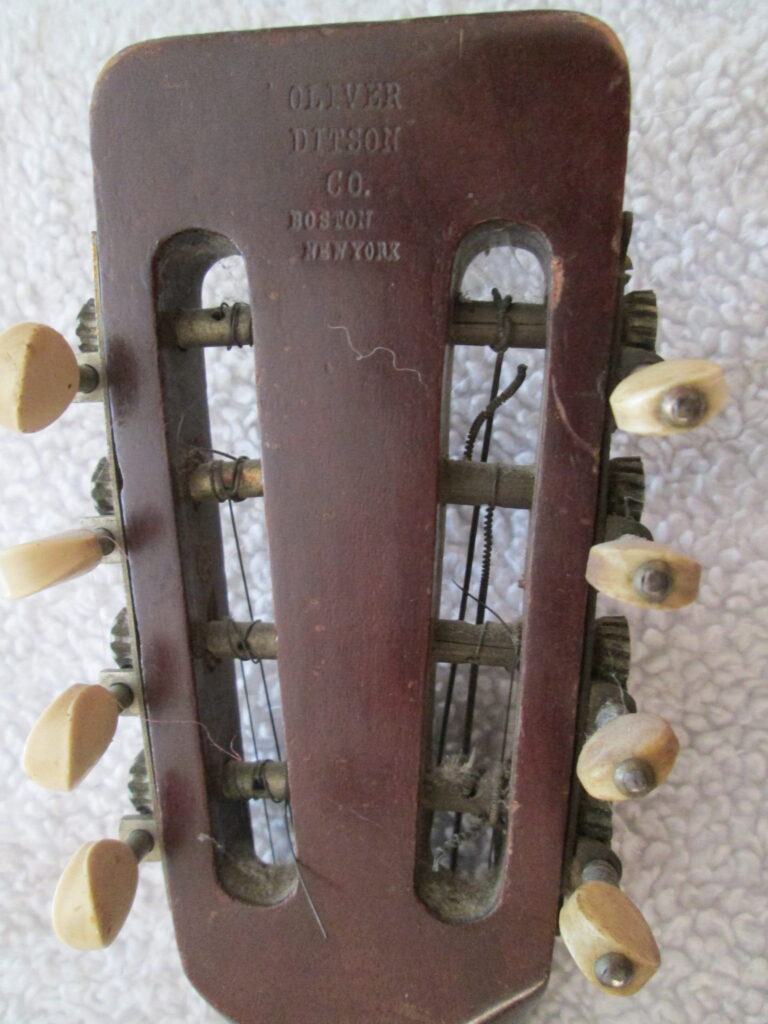
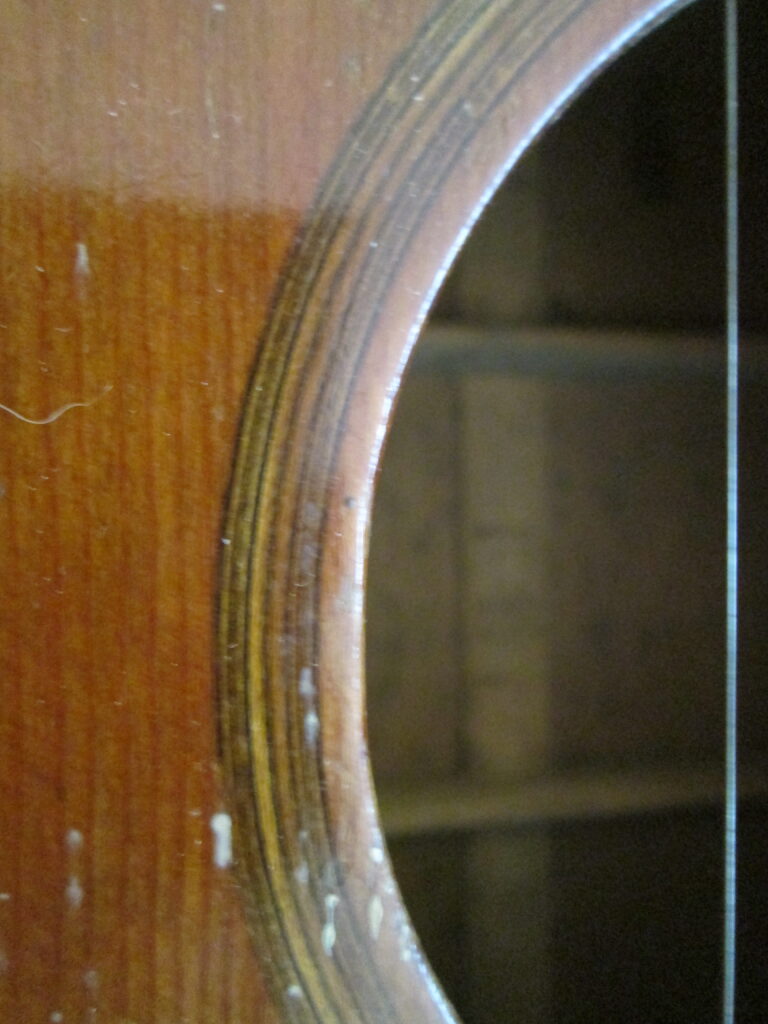
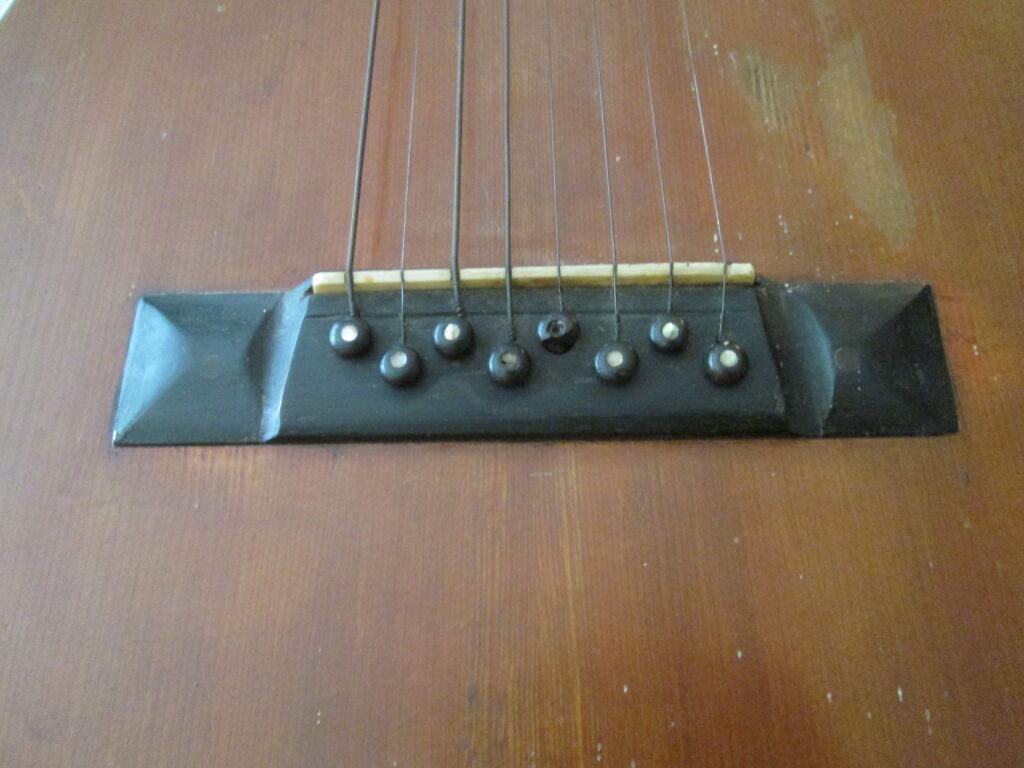
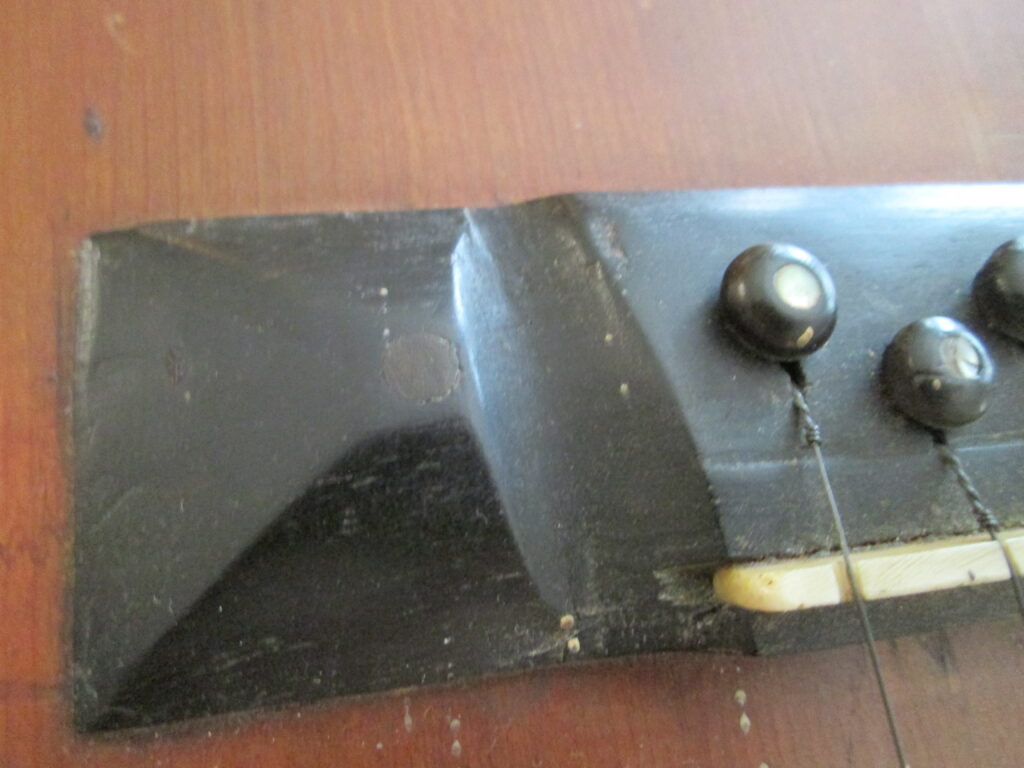
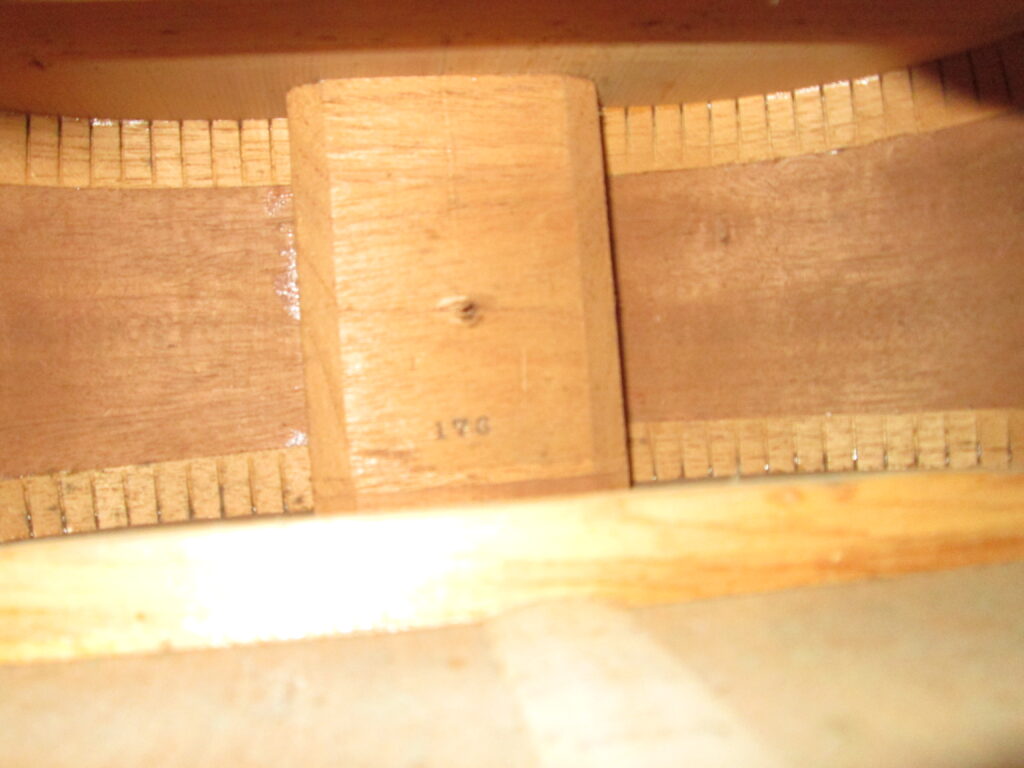
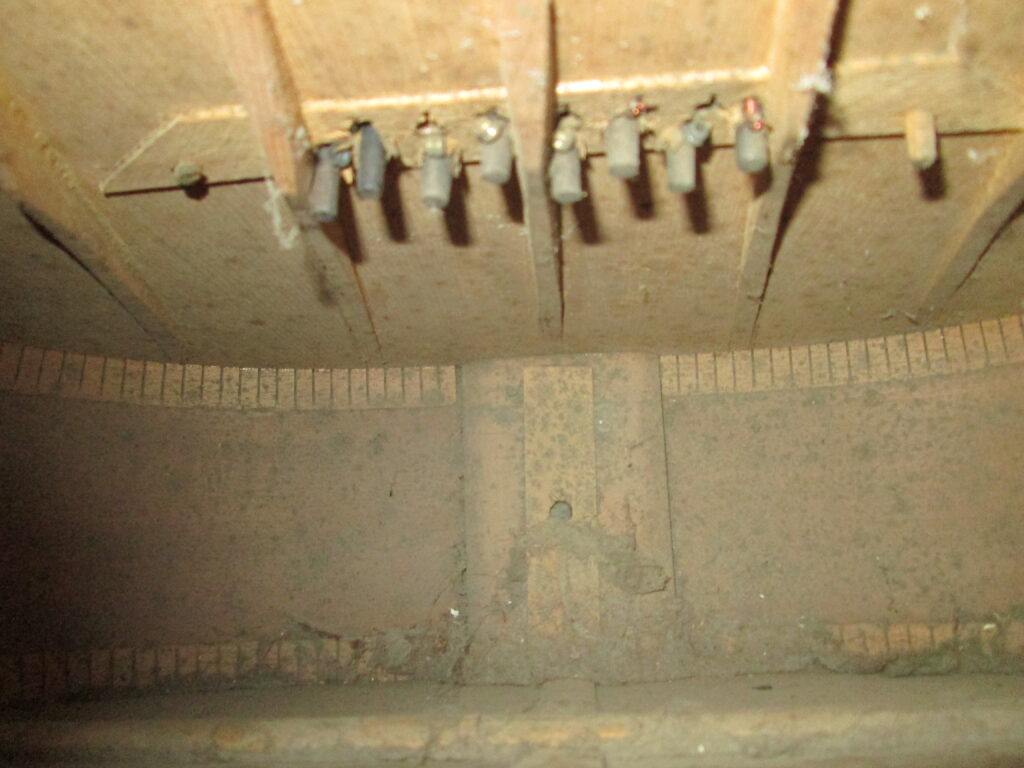

3 thoughts on “1916 Ditson 222 Dreadnought Guitar (Serial Number 176)”
How was the headstock modified to hold the eight strings? It definitely looks like it has been extended to accommodate the four on each side mandolin tuners. Are there signs of this extension of the headstock to prove that it was originally made to hold tuners for 6 strings and that the original headstock was modified.
Yes, from other photos it can be seen that the center hole for a six-string strip was plugged and two other holes were drilled to accommodate the mandolin machines. I think the outer holes are original. Thankfully, this operation can be revered and the six string machine strips will nicely cover the work done.
I’m a little confused about what strings this guitar was originally set up for. Above it indicates that this guitar was set up for gut string and Hawaiian playing. Also the fan bracing would support the gut strings set up. Yet I have always read that the Hawaiian craze led to Martin starting to make guitars with steel strings and X bracing. Now here we have the guitar as found with steel strings and being played Hawaiian Style. Also there are 8 steel strings on the example. This makes for a much greater stress on the guitar top. I have a 1935 0-18 that was originally X braced and set up for steel strings. One reason for the X brace is that it could handle the increased stress better than fan bracing. I know this was a period of transition from gut to steel in 1916. So this Ditson has me confused. Do the Martin records help to unravel this mystery. Is this 222 made for steel or gut? Indeed meanwhile I have never heard of a Hawaiian guitar for gut strings. Please help me understand how this guitar fits in this gut to steel transition in that period at the Martin factory.